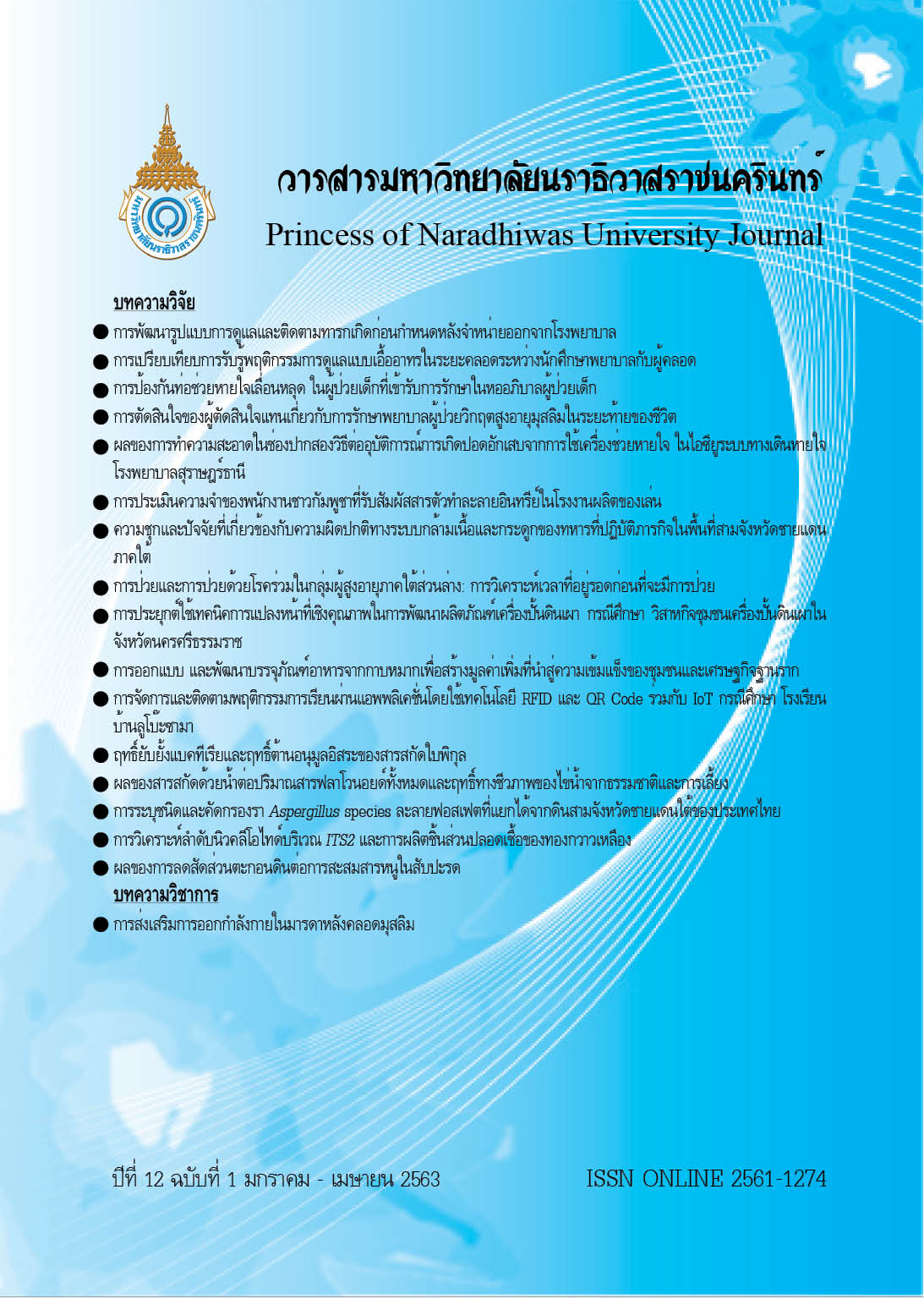Prevalence and Factors Associated with Musculoskeletal Disorders among Military Personnel Deployed for the Peace Building Process in the Three Southern Border Provinces of Thailand
Keywords:
Musculoskeletal Injury, Military, Three Southern Border ProvinceAbstract
Military personnel who perform in the Three Southern Border Provinces of Thailand must stand and patrol for long periods of time. They must perform the same tasks repeatedly. And they carry heavy armaments. In this study, we investigated the prevalence and factors associated with musculoskeletal disorders among 145 military personnel deployed in the Three Southern Border Provinces of Thailand. The data collection tool was the Standard Nordic Questionnaire (Thai version). Chi-square test, correlated data, and descriptive statistics were used to describe parameters and prevalence. The result found that the overall prevalence of musculoskeletal disorders among the troops was as high as 70.34%, while the prevalence 12 months before for low back pain (35.87%), hips or thighs pain (32.41%), shoulders pain (30.34%), knees pain (29.66%), yielded high levels. In addition, the prevalence 7 days before showed elbows pain (58.82%), upper back pain (56.25%), low back pain (51.92%) and shoulders pain (45.56%). Moreover, the results revealed that the number of working years and working hours per week were in statistically significant correlation with low back pain among military, while shoulder pain was in statistically significant correlation with the number of working hours per week. All finding in this study can be used as preliminary data in prevention program development for musculoskeletal disorders among military personnel deployed for the peace building process in the Three Southern Border Provinces of Thailand.
References
Chaiyapan, M. & Taephant, N. (2012). Relationship between sense of coherence and work stress of military personal in The Three Southern border Provinces: The mediating effect of coping strategies. Princess of Naradhiwas University Journal, 4(2), 40-58.
Jennings, B.M., Yoder, L.H., Heiner, S.L., Loan, L.A., Bingham, M.O. (2008). Soldiers with musculoskeletal injuries. Journal of Nursing scholarship, 40(3), 268-274.
Rukskul, I. (2011). Mental health status and attitudes among The Royal Thai Army personnel deployed for the peace building process in Southernmost Provinces of Thailand. Royal Thai Army Medical Journal, 64(2), 67-73.
Silanun, K. & Saengdidtha, B. (2012). Epidemiology of musculoskeletal and soft tissue injuries in Thai conscript basic training of the ninth infantry division. Royal Thai Army Medical Journal, 65(1), 11-19.
Tachavarinlert, J. & Yiemsiri, P. (2011). Incidence of musculoskeletal injuries in the first year Royal Thai Army female nursing students during the basic military training. Journal of Thai Rehabilitation Medicine, 21(3), 93-98.




